Violet LE-Rosemary: variety description and cultivation
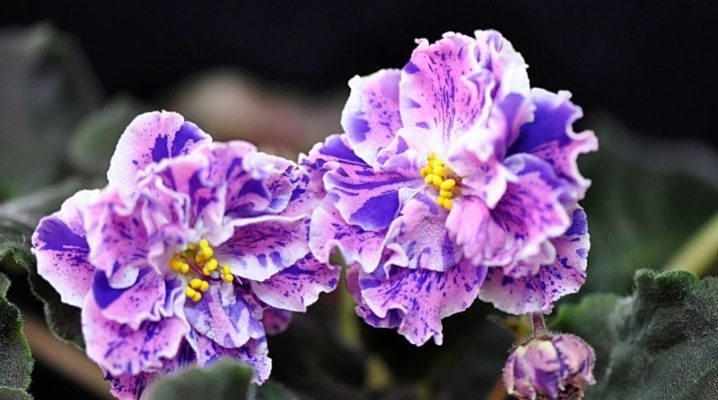
Saintpaulia is one of the most popular plants for home gardening. "LE-Rosemary" is one of the most attractive of its varieties, standing out for its lush and colorful flowers. It is worth mentioning right away that among gardeners, Saintpaulia is often called the Usambar violet, therefore this name will be found later in the text.

Peculiarities
Violet "LE-Rosemary" differs from other varieties of Saintpaulia in rather lush flowers, the diameter of which reaches 6 centimeters. As a rule, 2-3 buds with wavy petals are formed on one peduncle. The latter are solid or covered with dots, stripes or small spots. The most common color combination is considered to be pink with a yellow center and a snow-white border, but purple flowers are no less common. Sports with blue or blue-white flowers appear quite rarely.
The variety description contains information that flower stalks grow small, which, in principle, improves the appearance of the plant. The leaves are colored deep dark green and have a wavy edge. Subject to the conditions of care, Saintpaulia "LE-Rosemary" is capable of blooming throughout the year.
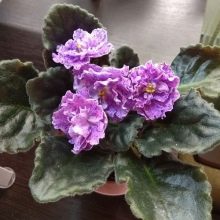


Conditions of detention
Even before organizing a system for caring for a violet, you need to choose the right place, temperature, humidity and lighting, the indicators of which can satisfy the plant. "LE-Rosemary" loves light, but does not tolerate direct exposure to ultraviolet radiation. It is best to select window sills that face west or east, which will provide optimal diffused lighting. In winter, Saintpaulia requires additional lighting, which is easily created using fluorescent light bulbs.
If you ignore this recommendation, then, most likely, you will not be able to expect flowering in the winter months.
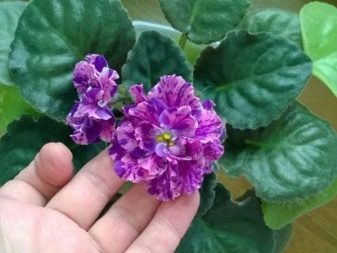
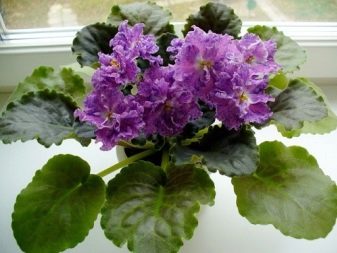
Violet "LE-Rosemary" feels good at a temperature located within the range from 20 to 23 degrees Celsius with air humidity not exceeding 60%... Low temperatures threaten with rotting of the root system and a short flowering period. Starting from the end of autumn, it is better to remove the flower from the window sills and transfer it to the center of the room, for example, placing it on shelves or stands.
In addition, it is important to remember that Saintpaulia reacts negatively to sudden changes in temperature - this again leads either to the cessation of flowering or to the occurrence of diseases.
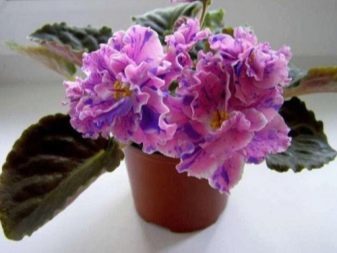
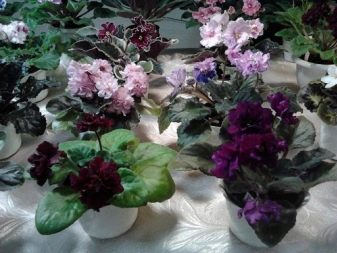
Transfer
Violet "LE-Rosemary" does not require large pots. On the contrary, an excess of free space can slow down the flowering process. Ideally, the container in which the flower will be placed should be half the diameter of the rosette itself, and have a sufficient number of drainage holes at the bottom. The most preferred material is plastic. As soon as the soil is almost completely filled with roots, it is time to expect the appearance of peduncles.
If an already blooming violet is purchased, then it is not necessary to transplant it immediately. At a minimum, you should wait until the roots begin to protrude from the holes in the bottom. In addition, an indication for the movement of flowers is the poor condition of the soil: it either no longer contains nutrients, or it has undergone excessive watering, which has led to rotting of the root system. The same applies to the appearance of white bloom on the ground - it is created as a result of an excess of mineral fertilizers.
Finally, it is worth moving Saintpaulia if the root system has completely encircled the earthen ball.

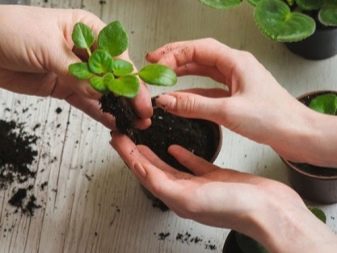
Repotting a violet is allowed at any time of the year, with the exception of those periods when buds are laid. It is also recommended to avoid the winter months, since at this time the flower is as weakened as possible, and it should not create additional stress. Fresh soil should be nutritious as well as loose. You can buy a ready-made mixture in the store, or you can create it yourself from part of river sand, five parts of deciduous soil and three parts of peat. It would be good to bake the soil in the oven for a couple of hours before use.
Before the start of the direct transplant "LE-Rosemary", in a new pot you will have to organize a drainage layer of two-centimeter pieces of bricks, small pebbles and pebbles. The soil mixture is placed on top, so as to get to the middle of the container height. Additionally, you can enrich the soil with a tablespoon of superphosphate and a tablespoon of wood ash. The Saintpaulia is carefully removed from the pot and placed in the middle of the new one.
Everything is sprinkled with earth, and about a centimeter should remain between the edge of the pot and the level of the soil. The violet is irrigated and immediately set in a well-lit, heated place.
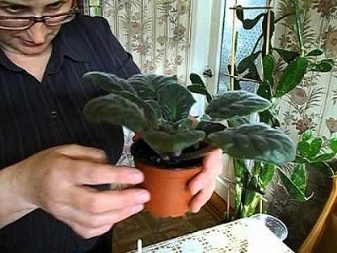
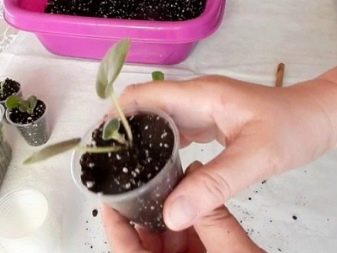
Care
Watering, feeding and pruning are the main components of LE-Rosemary Saintpaulia care. Violet does not require molded pruning, but she still needs to remove already faded buds, dried or damaged leaves in any way... If you want to update the outlet, you can completely cut it off, leaving only a stump under the lower leaves. If you put the outlet in water, then soon new roots will sprout at the violet.
When growing "LE-Rosemary", it is recommended from time to time to turn it towards the sun so that the leaves grow evenly and have the same size and color.
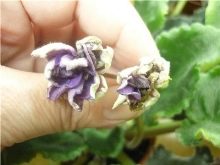
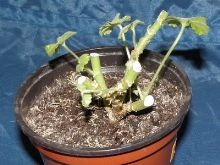
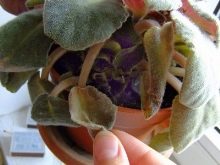
Watering
Irrigation of Saintpaulia is carried out 2-3 times a week. The amount of water should be moderate, otherwise it is easy to provoke rotting of the root system and, as a result, the death of the entire plant. Used water temperature should be kept within the range from 20 to 22 degrees Celsius... She needs to settle well, and, if possible, also be filtered. The use of melt liquid is considered to be no less successful.
Watering itself can be either top or bottom. When watering overhead, the liquid pours gently over the edge of the pot. It is very important to avoid getting moisture on the leaves and stems, but you need to evenly saturate the soil throughout the entire container. Bottom watering involves pouring water exclusively into the pan of the pot. Thus, the roots have the opportunity to consume as much moisture as necessary.
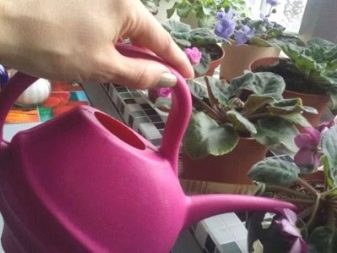

Top dressing
Fertilization is carried out throughout the year. At the beginning of winter, before flowering begins, it is recommended to purchase formulations with nitrogen, for example, "Master Color". At the moment when the violet begins to form buds, you can use combinations with potassium and phosphorus - they will contribute to a long and beautiful flowering. In this case, such drugs as "Kemira Lux" are suitable, the introduction of which is carried out every couple of weeks. Some experts are of the opinion that complex preparations can be applied to the ground every week, but by reducing the dosage by half.
Saintpaulia "LE-Rosemary" responds well to foliar feeding through regular spraying. True, in this case, it is necessary to take into account that there can be no drafts and direct ultraviolet radiation. The dosage for spraying should be two times weaker than for root feeding.
Fertilizers are applied to pre-washed leaves, preferably on a rainy day.
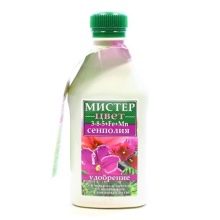
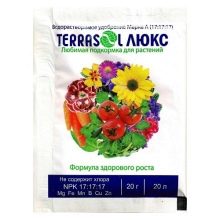

Reproduction
Violet "LE-Rosemary", like other varieties, can be propagated by seeds or cuttings. Plant leaves are used as the latter.The seed method is considered more complicated, therefore, experts recommend using the leaf rooting method. First of all, a healthy, strong leaf of a rather large size, growing on a short cuttings, is cut off from the mother violet. An elongated stalk will not work in this case, since it most often does not give children.
The sheet is cut at a 45 degree angle with a sharp and pre-cut tool. Then it is placed in a glass filled with drainage and soil mixture. The diameter of the container should be approximately 5-6 centimeters. It is better to take the substrate ready-made and additionally enrich it with a small amount of superphosphate and wood ash. The leaf goes deep into the soil to a depth of 2 to 10 centimeters. Next, the soil will have to be sprayed from a spray bottle and covered with a transparent plastic cap.
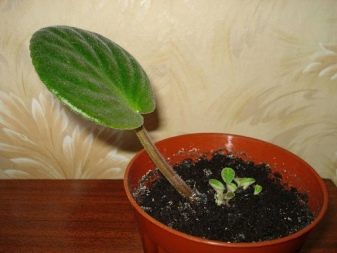

Having transplanted a young plant into an already permanent pot, it is worth preparing for some of the common problems that arise with LE Rosemary. If the violet does not bloom, then the problem is most likely due to insufficient lighting. Ideally, the daylight hours for Saintpaulia are 12 hours. An oversized pot is another likely cause. When the leaves darken and fall off, we are talking about any effect of cold, for example, contact with an ice window or watering with cold water and then falling on the leaves. Another such effect occurs when direct sunlight hits the leaves.
Curled edges occur when violets are grown in too acidic soil. The only right decision would be her immediate transplant. A yellow "frill" or completely yellowed leaves signal a lack of useful elements. Too high temperature and low air humidity will lead to the fact that the buds will no longer fully open, but will begin to dry out quickly. A similar effect is manifested when planting in a substrate with high acidity.
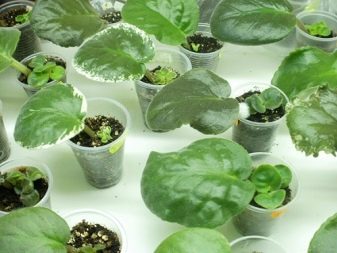
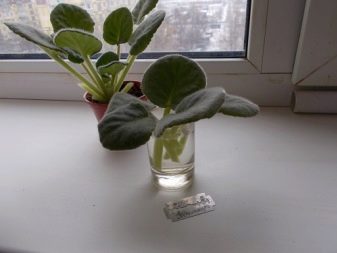
Dry air, together with excess sun, leads to the fact that the leaves begin to hang ugly from the pot. If holes or plaque appear on the leaves, and the petioles begin to rot, then, most likely, the violet is sick or has been attacked by pests. Since most illnesses are caused by improper care, it must be corrected immediately. In general, it is better to free the diseased plant from damaged particles and transplant it into a new pot with fresh substrate. Additionally, the culture is treated with a fungicide.
It will be possible to cope with pests only by using purchased insecticides.
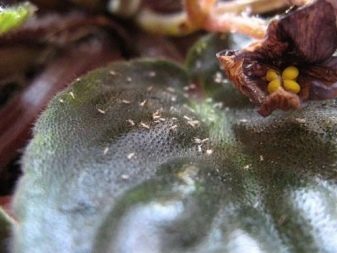
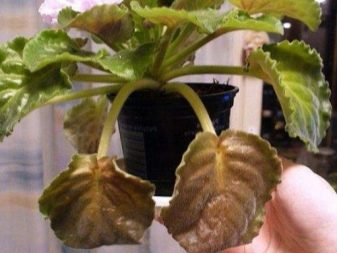
You can watch a video review of LE-Rosemary violets of an unusual color a little below.































The comment was sent successfully.